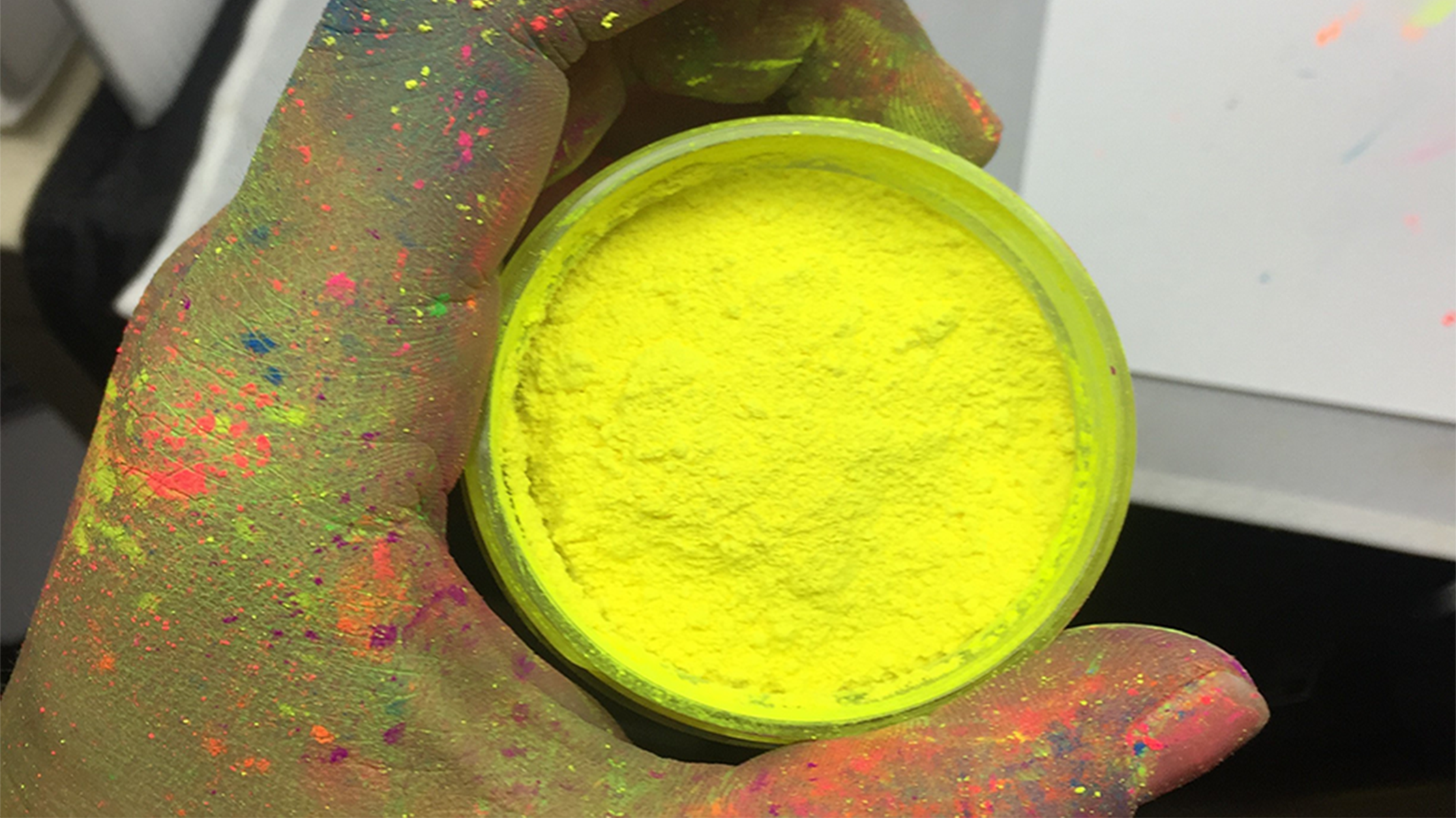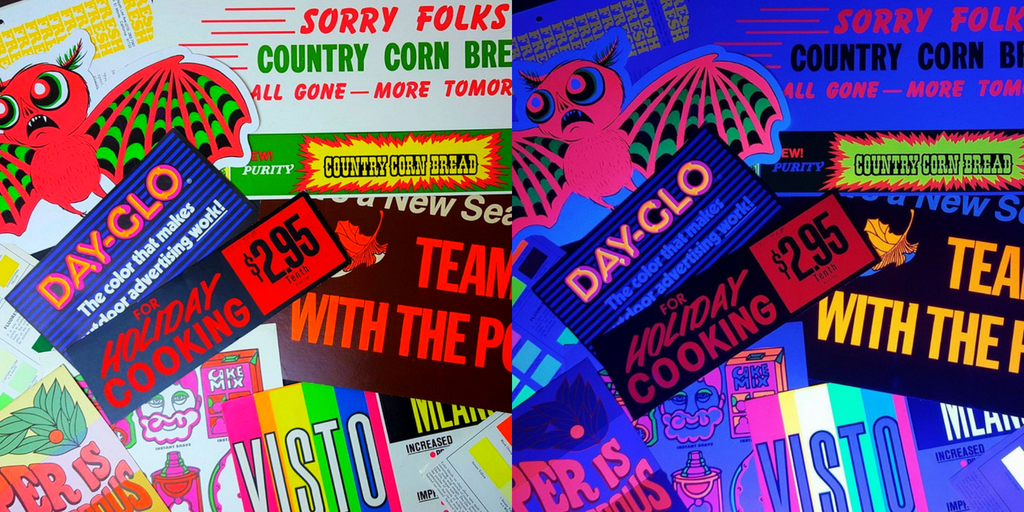Fluorescent color is everywhere
Have you ever noticed that some colors catch your eyes more than others? Have you ever found yourself drawn to a particular product on the store shelf, because the packing design screams “Over here! Look at me”? What about the highlighter yellow athletic shorts you work out in? The traffic cones in the construction zones on your morning commute?

Fluorescent color is everywhere, and odds are, you come across it in your everyday routine at least once a day. But what exactly is fluorescent color, and what makes it so special?
What Is Fluorescent Color?
‘Fluorescent’ refers to colors that absorb and reflect more light than conventional colors. Because of this, these pigments are brighter, bolder and better. Some people refer to fluorescent color as neon. We call it DayGlo®.
The color spectrum moves from invisible, low-energy infrared rays to high-energy ultraviolet rays. When looking at the color spectrum, the middle of the range represents the colors we actually see (the ‘visible light spectrum’). Normal colors absorb and re-emit a portion of the visible spectrum that matches its principal wavelength, while the remaining colors are absorbed and dissipated as heat.
Fluorescent colors use a larger amount of both the visible spectrum and the lower wavelengths compared to conventional colors (your traditional ROYGBIV colors). The difference between these two types of colors is that fluorescents absorb and convert light energy of the dominant wavelength, but also the wavelengths of ultraviolet rays and other colors lower in the visible spectrum.
Because of this combination, your eyes view fluorescent colors far more intensely as if they’re “glowing” in front of you. That extra glow you see is called ultraviolet (UV) light.

UV-Reactive Vs. Glow-in-the-Dark
Fluorescent colors are ultraviolet reactive and convert light to a dominant wavelength or color. Without a source of light (like a black light), the colors won’t be visible. As soon as you add an ultraviolet light source, the DayGlo pigments will appear to glow, while conventional colors remain dull and hardly visible in the dark. Remove the light, and the glow of the pigments will disappear before you.
These types of pigments are different than glow-in-the-dark colorants, also known as ‘phosphorescent.’ Phosphorescent pigments store the light source as energy and continue to emit a glow after the lights are turned off. The pigments remained charged for a short period of time, and will only start to glow again if they are reintroduced to artificial or natural light.
The DayGlo Difference
With our bright, fluorescent color palette, DayGlo Color Corp’s iconic neon colors are up to three times brighter than conventional colors and work across all mediums- from plastics and graphic arts to coatings and textiles. Ditching conventional colors could be what sets your products apart from the competition and helps build brand identity and recognition.
Bright conventional colors are able to reflect a maximum of 90% of a color present in the spectrum, but fluorescent colors can reflect anywhere from 200% to 300% of color. To learn more about just how much DayGlo® makes a difference for your advertising and products, read the Measuring the DayGlo Difference Case Study.
Interested in hearing more of what we do and what we have to offer? Contact us, and we'll be glad to answer any questions you may have!
